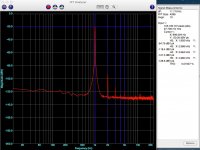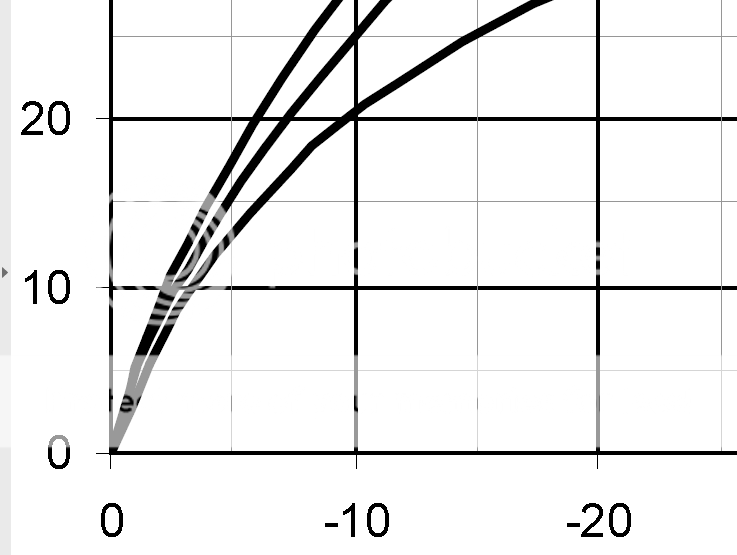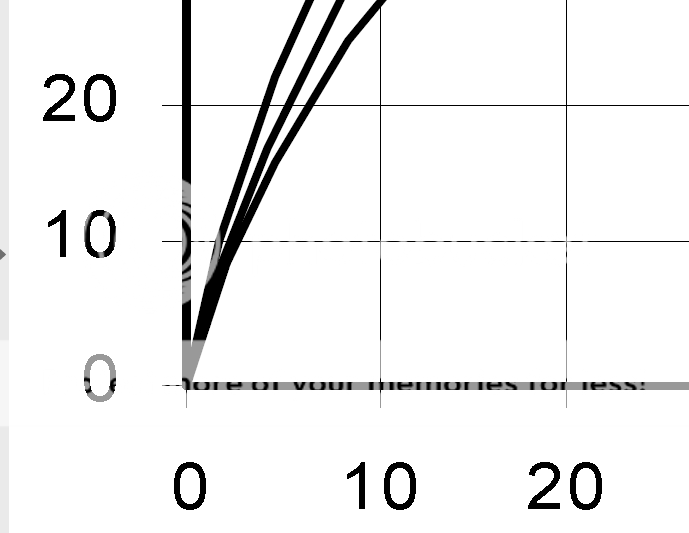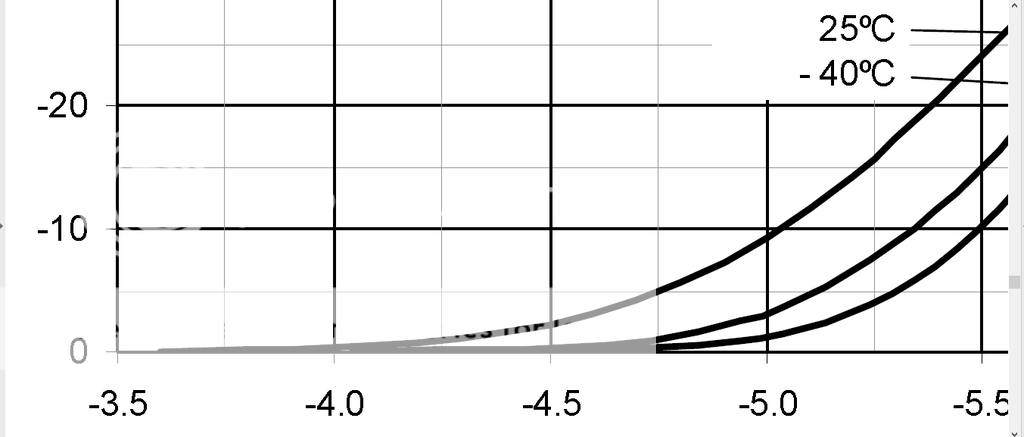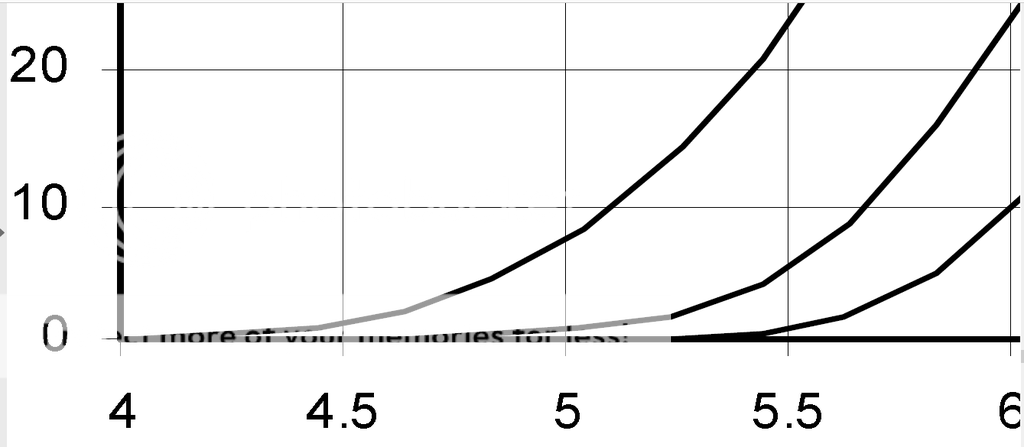I have been running simulations of just a push-pull output stage consisting of the IXTN40P50P coupled with another IXTN N-channel fet of similar amps, volts, Ciss specifications. I get very good distortion and damping factors, but the relative phase of H2 to H1 is positive, because I cannot find an N-channel device in the SOT-227 package with a transconductance lower than that of the IXTN40P50P.
In all of Nelson's recent designs he has sought to obtain a negative H2 phase. It would be nice if the output stage supplied it, instead of forcing the front-end stage(s) to indtoduce lots of negative H2 phase components to cancel the positive H2 of the output stage. The only other alternative to have an amplifier with positive H2 phase, reverse the speaker wires, and supply with amplifier with an inverted input signal.
In all of Nelson's recent designs he has sought to obtain a negative H2 phase. It would be nice if the output stage supplied it, instead of forcing the front-end stage(s) to indtoduce lots of negative H2 phase components to cancel the positive H2 of the output stage. The only other alternative to have an amplifier with positive H2 phase, reverse the speaker wires, and supply with amplifier with an inverted input signal.
I get very good distortion and damping factors, but the relative phase of H2 to H1 is positive, because I cannot find an N-channel device in the SOT-227 package with a transconductance lower than that of the IXTN40P50P.
Interesting. My design shows this behavior as well, though I only noticed it after your post. A heavy single-ended bias of my output stage moved the phase slightly negative, but not by enough.
In this instance, distortion at 1 W is close enough to zero that phase is possibly not even audible, you could easily test that if you build it though.
The situation is the same in BA3, and people aren't complaining about that amp.
I know of another method but that is IP of picodumb (haha) if you work it out make sure to keep to yourself
The situation is the same in BA3, and people aren't complaining about that amp.
I know of another method but that is IP of picodumb (haha) if you work it out make sure to keep to yourself
I have one channel of my XA25 try running. Simply modified Sony II frontend.
And yes degeneration at the J-Fets and at the SK/SJ. I used some APT20M10JVR for N channel and the IXYS170P10P for the P channel. I looked for same Ciss and nearly same transconductance.
Tomorrow second channel and some measurement hopefully, at least at the weekend.
I suppose from first sound impression too much k2, but it is not bad.....



And yes degeneration at the J-Fets and at the SK/SJ. I used some APT20M10JVR for N channel and the IXYS170P10P for the P channel. I looked for same Ciss and nearly same transconductance.
Tomorrow second channel and some measurement hopefully, at least at the weekend.
I suppose from first sound impression too much k2, but it is not bad.....
Last edited:
The N channel is APT20M19JVR. Small mistake.
No more available. I had them because I tried a Gamut build.
But besides the problem Lhquam entwined with the transconductance I am sure the IXYS work also.
Lynn all my simulation tools showed the wrong residual phase when I tried them on the Aleph3, do you remember? Did you check if your tools show neg K2 phase for the Aleph3?
No more available. I had them because I tried a Gamut build.
But besides the problem Lhquam entwined with the transconductance I am sure the IXYS work also.
Lynn all my simulation tools showed the wrong residual phase when I tried them on the Aleph3, do you remember? Did you check if your tools show neg K2 phase for the Aleph3?
Villars 2007 Power Amplifier II
Ha.... I can report you something new.....
Still only one channel of my try to use the Sony fronted and two IXYS to form an amp a bit similar to Nelson XA25. I will make the second channel tomorrow.
First thanks Mr. Pass for this everlasting inspiration, riddles and hints you give us for our entertainment!
Yesterday I measured the fairly well but dark sounding amp and .....
ugly 5% distortion what a disappointment and the knowledge that even 5% distortion with heavy k2 sound not too bad to my ears......

O.K. a fault in the frontend, biasing system or output stage? Isolating the failure made clear that my single ended fronted made at 4V around 0.012% distortion itself, of course k2 dominant.
And the output stage alone, thanks Mr. Pass again for the lecture at BAF2016, therefore I was encouraged to measure the output stage alone and here the guilty was....
5% distortion. One day later I found the reason.....
bad eyes.... the 220R gatestopper at the pucks were 221k!
Corrected and the world is full of sunshine....the output stage adds nearly nothing...
Again I used the old APT20M19jVR part and the IXT170P10T.
I think the IXFN170N10 could be a good complement. But helas already difficult to get.
So again the overview:
Sony frontend not with TL431 but simply voltage dividers, cranked up to 50mA for the SJ/SK. Here degeneration yes, none at the J-Fets F6 like, but 33R source resistors for the 2SJ301 and 2SK2013.
NTC for the bias regulation only but screwed on the heatsink at least. It takes half an hour nearly to get the final value.
I am sure that Lynn and 2picodumbs will deliver better solutions.
I look at the sophisticated Villars amp Lynn made ....... :--))
http://www.diyaudio.com/forums/pass-labs/295387-villars-2007-power-amplifier.html
even cascoded.
and here the distortion at the moment fronted and output stage, 1W with 8R.
Not Nelsons values but a starting point.
Tomorrow I will look for the phase of k2.
Ha.... I can report you something new.....
Still only one channel of my try to use the Sony fronted and two IXYS to form an amp a bit similar to Nelson XA25. I will make the second channel tomorrow.
First thanks Mr. Pass for this everlasting inspiration, riddles and hints you give us for our entertainment!
Yesterday I measured the fairly well but dark sounding amp and .....
ugly 5% distortion what a disappointment and the knowledge that even 5% distortion with heavy k2 sound not too bad to my ears......


O.K. a fault in the frontend, biasing system or output stage? Isolating the failure made clear that my single ended fronted made at 4V around 0.012% distortion itself, of course k2 dominant.
And the output stage alone, thanks Mr. Pass again for the lecture at BAF2016, therefore I was encouraged to measure the output stage alone and here the guilty was....
5% distortion. One day later I found the reason.....
bad eyes.... the 220R gatestopper at the pucks were 221k!
Corrected and the world is full of sunshine....the output stage adds nearly nothing...
Again I used the old APT20M19jVR part and the IXT170P10T.
I think the IXFN170N10 could be a good complement. But helas already difficult to get.
So again the overview:
Sony frontend not with TL431 but simply voltage dividers, cranked up to 50mA for the SJ/SK. Here degeneration yes, none at the J-Fets F6 like, but 33R source resistors for the 2SJ301 and 2SK2013.
NTC for the bias regulation only but screwed on the heatsink at least. It takes half an hour nearly to get the final value.
I am sure that Lynn and 2picodumbs will deliver better solutions.
I look at the sophisticated Villars amp Lynn made ....... :--))
http://www.diyaudio.com/forums/pass-labs/295387-villars-2007-power-amplifier.html
even cascoded.
and here the distortion at the moment fronted and output stage, 1W with 8R.
Not Nelsons values but a starting point.
Tomorrow I will look for the phase of k2.
Attachments
Last edited:
In this instance, distortion at 1 W is close enough to zero that phase is possibly not even audible, you could easily test that if you build it though.
The situation is the same in BA3, and people aren't complaining about that amp.
I know of another method but that is IP of picodumb (haha) if you work it out make sure to keep to yourself
In simulations of both the complete amp and only the output stage, at 25W into 2R, 4R and 8R the H2 level is still very high, so it isn't just at low power levels. In simulations of the complete amp, changing the 2SK170 Idss or adding a few Ohms source resistance to the K170, changes the H2 phase. Unfortunately, when the H2 phase is negative w.r.t H1, the magnitude of H2/H1 is very high. When I try to reduce H2/H1 I end up with positve H2 phase. The issue originates from the fact that the N channel FET has significantly higher transconductance than the P-channel FET.
We probably have a good idea about the basic topology of the XA25, and can hypothesize various combinations of FETs to use. But, I think it is pointless to forever tweak the simulations to get distortion spectra and phase using the IXYS SPICE models. The IXFN40P50P model is SPICE level-1 and doesn't specify any capacitances. Other models are mostly level-3. The simulations will only predict DC behavior until better SPICE models are created, and even the DC behavior is in question. Bottom line: Purchase some of the IXYS fets and make your own measurements. Problem: Those fets are expensive: $20USD and more each. BTW: I have another ongoing project which is a "Swiss Army Knife" MOSFET measurement jig. I will start a thread for that project when it has matured further.
In simulations of both the complete amp and only the output stage, at 25W into 2R, 4R and 8R the H2 level is still very high, so it isn't just at low power levels. In simulations of the complete amp, changing the 2SK170 Idss or adding a few Ohms source resistance to the K170, changes the H2 phase. Unfortunately, when the H2 phase is negative w.r.t H1, the magnitude of H2/H1 is very high. When I try to reduce H2/H1 I end up with positve H2 phase. The issue originates from the fact that the N channel FET has significantly higher transconductance than the P-channel FET.
A very large percentage (maybe higher than 80%) of what you hear occurs at or below 1W so, I don't tend to lose sleep at what is happening at 25W which at 0.1% THD is extremely good (better than any other firstwatt amp, I can think of).
I certainly enjoy playing with the circuit to make it behave the way you want though, so go for it.
Last edited:
Another problem, despite price, is that what looks to me to be the best match to the IXFN40P50P is not available anywhere...
Both parts are available in other packages, but they won't have the dissipation of the hockey pucks.
It is the low C/W thermal coefficient of the hocky-pucks that is a game changer. Do not consider pairing a SOT-227 package with a TO-264 or other smaller package. DO NOT TRUST the DATASHEETS or the SPICE MODELS. In the "Better power MOSFET models in LTSpice" thread http://www.diyaudio.com/forums/soft...-power-mosfet-models-ltspice.html#post4158594, and from my own measurements, it is clear that at power levels well below their intend use, none of the SPICE models describe their actual behavior. The Id vs. Vgs and gm vs Id curves are different.
In simulations of both the complete amp and only the output stage, at 25W into 2R, 4R and 8R the H2 level is still very high, .
Could you show what you have.
I produced my own spice models which very closely match the Id vs Vgs curves from the data sheets at 25C. They give close to the predicted results Papa suggested.
If I could see how high your distortion is that would help though. Are your models ok?
Last edited:
- Home
- Amplifiers
- Pass Labs
- Pass XA25?
